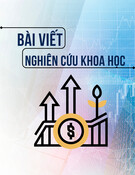
Claiming Incentive Logistics at the Heavy 4th Tuban Cement
Project in Indonesia: A Practical Guidance
Effnu Subiyanto
Widya Mandala Surabaya Catholic University, Indonesia
effnu@yahoo.com
Abstract. This practical research aims to be guidance for investors who intend to claiming
projects’ incentives offered by Indonesia’s government. Many of them failed to claim such
incentives due to lack documents fulfillment since preparation, they mostly unaware, when it
needed just realized requiring many revisions and finally came to end-rejection. Scope of this
paper is in Indonesia for investors who are in preparation-stage to do project investments. It
comes to conclude that remodeling logistics’ execution can successfully reduce to only 7% of
logistics costs or far below than Doing Business’ finding. Methodology applied was changing
Incoterms to be free on board (FOB) instead of cost and freight (CFR).
Keywords. Logistics costs, Investment, Cement project, Incentives
Introduction
To anticipate future economics’ surprise due to rapid economics’ growth fueled by
national infrastructure’s projects, Indonesia today does to adjust many things. The world
ranking just released by the Ease of Doing Business (EODB) has been becoming alarm and
high attention as the country was targeting to the level 40 to 50 by the end 2021. But in fact,
Indonesia’s ranking by 2019 was at 73 over 190 countries, only one level below than EODB
2018’s achievement, though based on point is 1.42 higher becoming 67.96 than score
achieved in 2018.
Dwelling time that recorded the lowest score for logistics performance had widely
improved. If few years ago stood over 7 days up to weeks to get berth permission while it is
only requiring 3 calendar days maximum now.
However as Indonesia just recently released that economic growth stood at 5,02% for
2019, many things should be concerning not only dwelling time but also others that
possibilities to hindering investment’s appetite generally.
Recently, a number of several regulations have been released by Government to
invite investors. The incentives cover income tax free and tax holiday. According of Minister
of Finance Regulation (PMK) No. 35/2018 and Investment Coordinating Board (BKPM)
Regulation 5/2018 on Tax Holiday states that the recipients of incentives comprise 17 pioneer
industries covering 153 business sectors. The tax holiday is given through three PMKs
namely; (1) PMK 130/2011, (2) PMK 159/2015, and (3) PMK 35/2018. PMK 35/2018 is
incentive fiscal of investments. It stated that income tax granted for 100% free and can be
exempted for 5 years to 15 years and can be extended up to 20 years for strategic projects.
1
Technium Social Sciences Journal
Vol. 5, 1-11, March 2020
ISSN: 2668-7798
www.techniumscience.com

Literature review
Logistics systems according Coyle (2012) is the process of planning, implementing
and controlling the efficient, effective, flow and storage of raw materials, in process
inventory, finished goods, services and related information from point of origin to point of
consumption (including inbound, outbound, internal and external movement) for the purpose
of conforming to customer requirements. Besides, definition of logistics system in Wilson
(2003) states logistics is the transparency and professionalism of customs and regulatory
environments as well as harmonization of standards and conformance to international or
regional regulations.
Indicators for implementation of logistics systems according Wilson are (1)
efficiency port; (2) procedures, inspection and maintenance of supporting documents; (3)
regulation; and (4) e-business.
The importance role of the ports mentioned in Clark (2004) that port infrastructure is
important to serve good movement. There are three determinants of port efficiency, such as
(1) restrictions against foreign participation in cargo handling; (2) obligation services are
mandatory as like pilotage, towing, tug assistance, navigation aids, berthing, waste disposal,
anchorage, and other mandatory service; and (3) the absence of organized crime such as
smuggling.
Along with the increasingly competition in terms of products and services at the
present time, the logistics system has undergone its own evolution. Even now it is still
ongoing by itself to meet the equilibrium point.
Logistics system revolution occurred in 1990 (ITB, 2007) as a fundamental change in
the business or industrial processes. This condition happens throughout worldwide with
United States as being the main international benchmarking. The central point of the
revolution is lying on the concept of value added by customer service or additional value
dedicated to customers. The impact of global logistics systems revolution has influenced high
competition, opportunities for participation to broader market, deregulation of transportation
systems, mergers and acquisitions (Weston, 2004).
Metamorphose logistics system within period of 1980-1990 had achieved the integration
between production processes through marketing network or channel partner. This subject is
now still being developed by logistics service providers into modern concept called logistics
supply chain management system. In the newest supply chain management concept is carrying
a payload of data and information which is more complexes and varies requiring deeper
analysis.
Unit of information that must be aligned is consisting integration of production data,
budget information and flow of multiple stakeholders’ interests in a single business process or
production.
The notable of efficient project budgets is needed due to generally limited funding. In
general, to conduct projects are uncertain regarding many issues must be addressed.
Construction environments, for instance a stage that is requiring lot of resources. These
performance measures are governed by the ability of the organization to maintain necessary
sets of “competencies” that assist in the successful execution of its construction projects.
Omar and Fayek (2016) in his paper indicates that one of competence during project
execution is utilizing subsidies and or incentive offered by third parties. Such discounts could
be come from vendors, social, and even more might come from authorities.
Hassen et al (2011) build success several criterias executing projects that supporting
Omar and Fayek (2016). Hassen has anticipated that most of project executions failed to align
2
Technium Social Sciences Journal
Vol. 5, 1-11, March 2020
ISSN: 2668-7798
www.techniumscience.com

success criteria with company's success in the long-term. The criterias mentioned are project
management, product success, along with market success. Part of project management itself –
one of it is- utilizing subsidies.
It was clear that costs, time, and quality play important role as success factor, while
widely the project team be able to manage resources than has bigger chance to get success to
run projects. Atkinson (1999) explicitly concerning these factors which are said The Iron
Triangle.
Problem statement
Logistics in Indonesia has been in long time ago becoming the most issues as the top
hurdle economy in daily nation. Distributing daily needs absolutely interact with the terms,
commuting people is also will face the issue, and so far while investors will do investment in
the country unavoidably will be challenged by this terminology. As the costs compensation
against Indonesia’s logistics had reached 27% national GDP, every investor will think
multiple times to start economics’ initiative as like making new investments.
The most hurdles lie on limited infrastructure almost in entire nation. Ports are at few
numbers, if available with limited supported. There are without sufficient cranes, unavailable
access to and from ports, thin trestle or concrete with consequence not stand for heavy
machineries for generally projects. The ironic things, tools and or vehicles for road such as
trucks, heavy-trucks, special heavy-trucks are also limited with consequence expensive to be
hire.
It is not only hard structure, even more, soft structure is also concerned and was
being attention. Briberies, levies, fees are common and must be meet or otherwise all
processes halt or stop with much higher costs to solve later.
Even though, hard and difficult investment’s climate in Indonesia; however,
government provides number of subsidies and or project’s incentives for compensation. Much
of them in taxes-trade meant discounts, deducts to omitted taxes obligations instead of making
new investments in Indonesia. Type of incentive taxes are income taxes, value-added taxes,
duties, share-holders taxes, import taxes with generally at range of 5% to 35% of the amount
reported.
Purpose of the study
This study aims to do remodeling logistics variables based on the heavy 4th cement
projects of the State-owned Semen Indonesia which is effectively implemented during the
projects. The project was carried on at the remote area in Central Java island but in the middle
of forest that limited infrastructure to be accessed, it must deal with bad quality of roads,
insufficient bridges and hundreds of roads’ obstacles as like banners, narrow roads,
advertisement boards and even without jetty for unloading point heavy goods from sea.
To execute the project absolutely required distinguish things with complex scopes not
only at technically things but also dramatically others as like social, communications skill
both oral and verbal. Writing ability was also demanded as high frequency to circulate letters
with multiple issues.
Methodology
This study has been thoroughly analyzed by combining semi-structured interviews
with various executives and contractors. They have been gathered, selected, and analyzed for
period of research by explanatory research model. This study also utilizing mixed study both
in quantitative and qualitative analysis to build comprehensive practical guidance conclusion.
3
Technium Social Sciences Journal
Vol. 5, 1-11, March 2020
ISSN: 2668-7798
www.techniumscience.com

In technically, as author involving at the project directly and had been authorized to
supervise and operations, the position was useful to remodelling logistics’ strategy. A number
sequence of strategies had been planned as following:
- Evaluating project progress and development at least 45 days later;
- Defining imported machineries that should be immediately processed and preparing
import documents;
- Contact and communicate with overseas suppliers informing that certain goods must be
immediately prepared for shipment;
- Start proposing incentive import taxes to various ministries in Indonesia;
- Start shipment date;
- Incentive decision granted has been taken;
- Preparing notice of arrival and submit import documents to Indonesia’s customs along
with incentive certificates;
- Start unloading and carrying goods to the project’s location;
- Dealing with inland transportation when size and weight of goods are categorizing
normal; but
- Preparing multimodal or combination transportation on sea and road while size and
weight are extreme and or heavy;
- Unloading at the project’s location.
Data
During execution of 4th Tuban’s cement project, the project’s owner purchased main
machineries from 7 countries in Europe and Asia. The countries are known already proven in
design and making machineries for cement plants are Germany, Belgium, Spain, Portugal,
China, India and Turkey. The procurement contract was built with the EPC type which is
Engineering, Procurement and Construction. Suppliers only obliged to supply engines that all
processed through openly transparency tender, while the construction was done by the owner.
Due the term of delivery based FOB (free on board) had agreed by the parties, then
preparing, organizing deliveries out from origin ports and selecting appropriate vessels are
becoming project owner’s responsibility. According the EPC contract, the buyer is obliged to
arrange sea-transport from 7 main worldwide ports to the nearest destination ports of the
project site which is the only single Tanjung Perak’s port, Surabaya.
Cost structure of FOB delivery terms according Incoterm 2010 are: (1) insurance; (2)
sea-freight charges; and (3) customs clearance or customs charges. Costs that are not formal
for example ports charges and fees are responsibility to the project owner and becoming extra
costs.
Sum of all three costs structure become value declaration to the Customs and becoming
base calculation to pay mandatory tax obligations. The import taxes are import duty of 5%,
value added tax 10%, and or income taxes 2.5%.
The table below is total shipments of goods imported to the 4th Tuban’s project. There
are only two non-European countries origin, as stated earlier which are China and India. The
two-non-European is contributing for the project only 28.25% while majority imported
portions are coming from European countries.
1) Table 1. Data Goods Imported for Tuban 4th Cement Project
Shipmen
t No
Value of
goods
Vessel’s name
Port of
loading
Country of
origin
Cargo
volume
(CBM)
4
Technium Social Sciences Journal
Vol. 5, 1-11, March 2020
ISSN: 2668-7798
www.techniumscience.com

1
US$15,233
Wanhai 510
Chennai
China
355.90
2
US$3,595
MSC Joanna
Izmir
Turkey
83.99
3
US$233,117
Wanhai 503
Antwerp
Belgium
1,584.21
4
US$51,842
Hanjin Long
Beach
Porto/Leixoe
s
Portugal
1,211.27
5
US$34,788
M/V Mary
Schulte
Bilbao
Spain
236.41
6
US$14,280
Normed
Rotterdam
Hamburg
Germany
3,333.64
7
US$351,640
Normed
Rotterdam
Nhava Sheva
India
2,389.67
8
US$195,767
Norjan
Antwerp
Belgium
1,330.39
9
US$5,428
Kota Latif
Hamburg
Germany
36.89
10
US$36,013
Donau Trader
1009s
Chennai
China
244.74
11
US$90,447
MV Regine
Porto/Leixoe
s
Portugal
242.41
12
US$52,061
Stadt Rostock V
259
Bilbao
Spain
566.91
13
US$114,517
MV Regine
Antwerp
Turkey
778.23
14
US$65,436
Hanjin
Casablanca
Nhava Sheva
India
898.85
15
US$21,991
Beluga Loyalty
Chennai
China
239.47
16
US$9,636
Arabia Express
Antwerp
Belgium
104.92
17
US$42,049
Humber Bridge
Izmir
Turkey
285.75
18
US$491,519
Beluga Loyalty
Hamburg
Germany
5,352.37
19
US$12,430
Beluga Loyalty
Bilbao
Spain
135.35
20
US$66,614
Beluga Loyalty
Porto/Leixoe
s
Portugal
725.39
21
US$24,228
Beluga Loyalty
Nhava Sheva
India
263.82
22
US$52,886
Beluga Loyalty
Izmir
Turkey
575.90
23
US$62,772
MV Carlo Star
Chennai
China
683.55
24
US$3,466
Cape Manuel
Antwerp
Belgium
37.74
25
US$5,663
MOL Admiration
Nhava Sheva
India
61.67
26
US$2,235
Conti Sidney
Bilbao
Spain
24.33
27
US$218,171
MV Carlo Star
Hamburg
Germany
2,375.76
28
US$206
MOL Charisma
Porto/Leixoe
s
Portugal
4.82
29
US$8,526
MOL Success
Nhava Sheva
India
92.84
30
US$14,149
Husky Runner
Izmir
Turkey
154.07
31
US$5,111
MV Racha Bhum
Antwerp
Belgium
34.73
32
US$137,800
MOL
Competence
Porto/Leixoe
s
Portugal
500.56
33
US$56,595
APL Zeebrugge
Bilbao
Spain
616.28
34
US$31,693
APL Poland
Hamburg
Germany
345.11
5
Technium Social Sciences Journal
Vol. 5, 1-11, March 2020
ISSN: 2668-7798
www.techniumscience.com

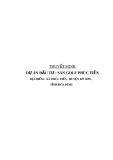
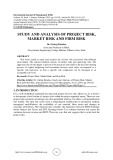
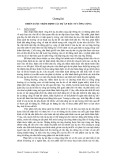
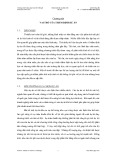
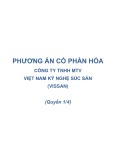



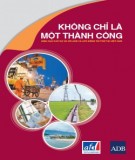
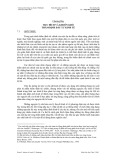
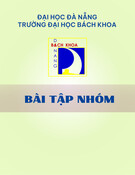
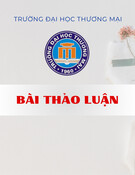





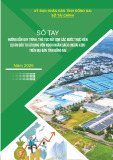
![20 câu hỏi Quản lý dự án phần mềm có đáp án [mới nhất]](https://cdn.tailieu.vn/images/document/thumbnail/2025/20251003/hieu2004haha@gmail.com/135x160/78791759734259.jpg)
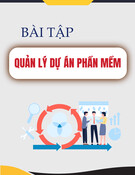
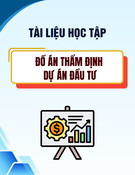
![Tài liệu Quản lý dự án: Kiến thức nền tảng toàn diện [chuẩn SEO]](https://cdn.tailieu.vn/images/document/thumbnail/2025/20250910/kimphuong1001/135x160/92631757496585.jpg)


